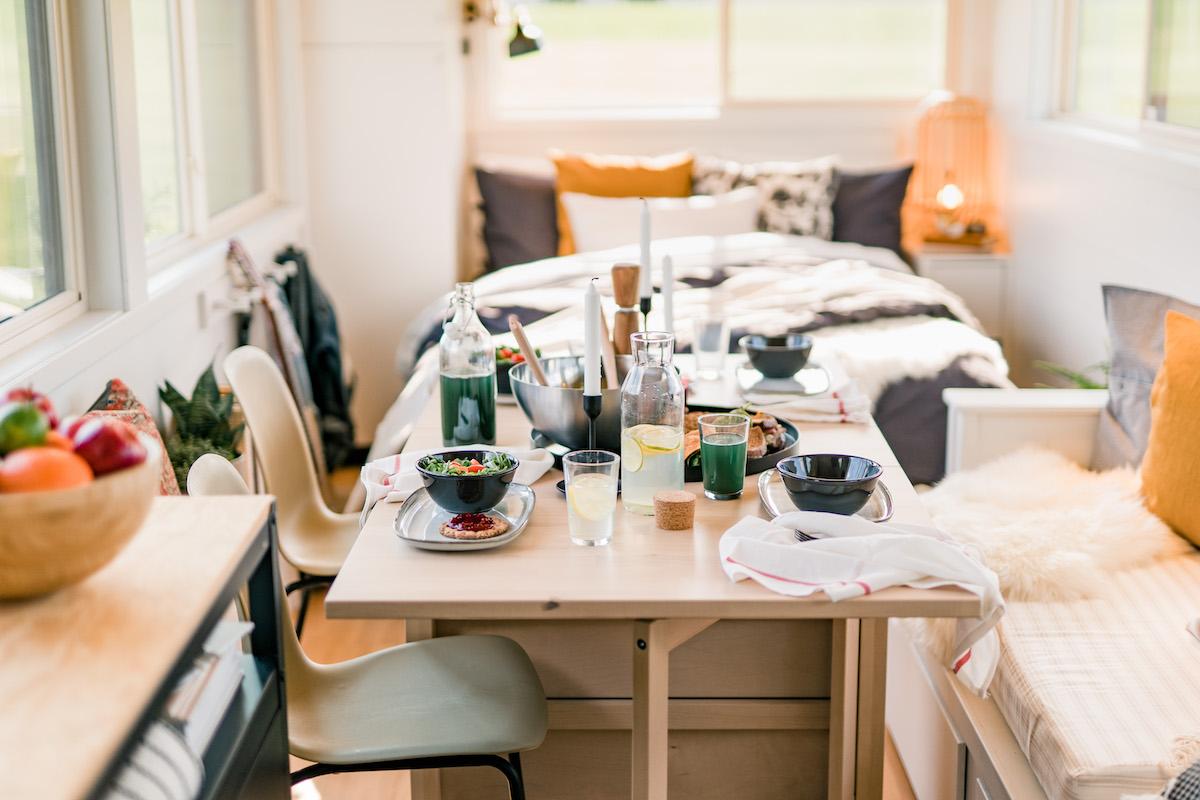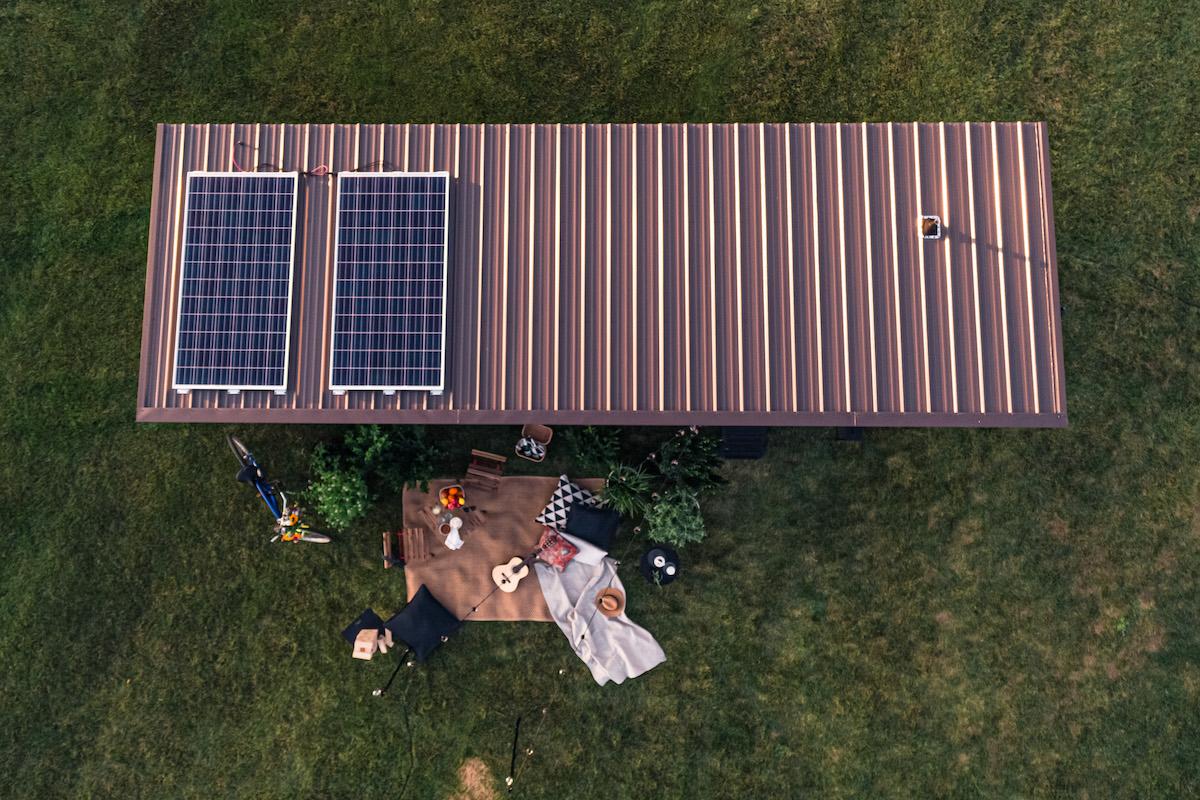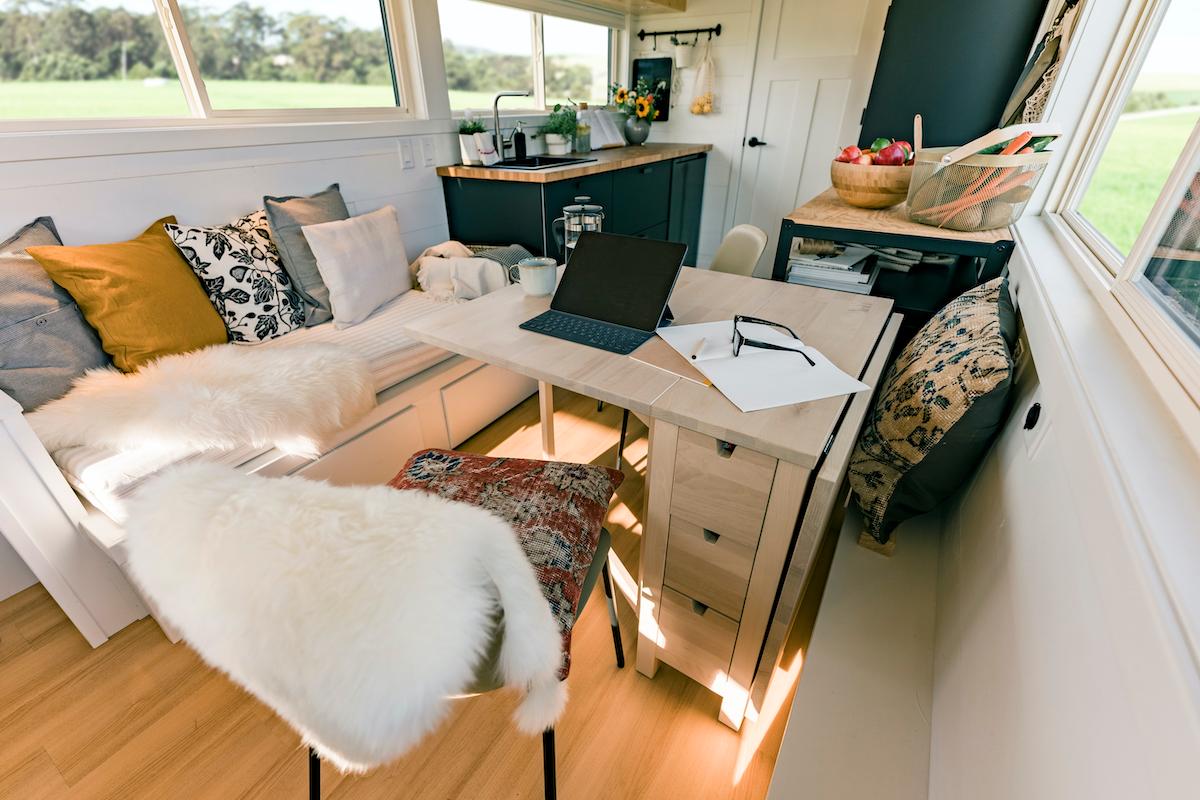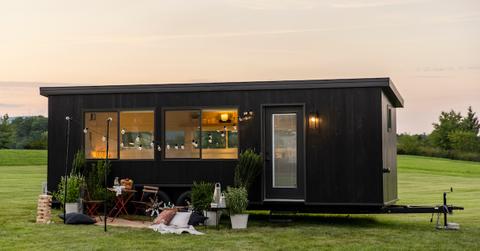Are Tiny Houses Sustainable? Here's How They Can Save You Money and Energy
How sustainable, really, is a tiny house?
Published Jan. 7 2021, 10:10 a.m. ET
Tiny houses seem to be the trend in sustainable and affordable living lately. There are TV shows, documentaries, Instagram accounts, and even podcasts dedicated to tiny house living. And while it can be fun to sometimes follow along on tiny housers’ journeys, one central question still remains: How sustainable, really, is a tiny house?
Tiny houses are homes that are anywhere from 100 to 400 square feet — but if you want to get technical, some people will argue anything above 200 square feet constitutes a “small home,” not a tiny one. Anyway, the movement started gaining momentum over the last five years under the notion that not only do tiny homes significantly cut down one's environmental footprint, but they are also a more affordable way for people to become homeowners.
In many cases, people who otherwise would not be able to become homeowners can if they opt for a tiny house. Expenses are generally lower, and it takes less $$$ to keep the ship running tight.
Speaking of $$$, 89 percent of tiny house owners have less debt than the average American. In fact, 60 percent of tiny house owners have no debt at all, and 55 percent of owners have more savings in the bank than other homeowners.
But aside from being financially healthy, tiny homes are thought to have some sustainable benefits that larger homes do not. Here are a few ways that tiny homes foster a sustainable lifestyle.
Tiny homes are generally built with sustainable materials.

Because a tiny home is so small, there is a lot of opportunity to have full creative reign over building your home. Some people actually salvage used materials and use those to build their homes. There are also a few companies that use either sustainably-sourced or recycled materials to build the tiny homes that they then sell.
Tiny houses can be made from reclaimed and corrugated tin, reclaimed windows, shipping pallets, reused pine flooring, reclaimed barn wood siding, and so much more. In fact, some people have built tiny homes from recycled materials for less than $500. But don’t forget, 500 bucks isn’t the norm. In fact, the average cost of a tiny home is around $25,000.
There’s only so much space for “stuff.”
It’s impossible to not Marie Kondo your space when your space is… well, tiny. With a limited amount of room, there is virtually no tolerance for collecting unnecessary stuff, hoarding, or any rat pack tendencies. In a backhanded kind of way, a tiny house trains you not to collect too much stuff, and to really be intentional about your purchases.
Tiny homes use less energy, making less waste.

The bigger the space, the more effort (and more energy) it takes to heat that space in the winter or cool it in the summer. By that logic, you can guess that tiny homes actually do use less energy, making less waste, and therefore making them more sustainable.
According to the Alliance to Save Energy, tiny homes are much more energy efficient than traditional ones. After all, the average American home is somewhere around 2,500 square feet! Want to know how much you could save by switching to a tiny home? To calculate how much dough it takes to heat up your home (by size and by average cost of gas near you), check out this Cost of Heating Calculator.
But how much energy a tiny home consumes is up to its design. Obviously, some use more energy than others, but because tiny homes are customizable, the homeowner has the power to make the most sustainable choices possible. For example, some homes may feature large windows on both sides of the home, which supports passive heating and cooling.
Others may use solar-powered blackout shades on skylights; this prevents 40 percent heat loss and affords 60 percent heat gain… when you need it. And if tiny homes do not use an instant water heater—instead opting to turn on a heating element 10 or 15 minutes before using hot water—you have the option to save even more energy (and dollars) than homes with instant water heaters.
Other customizable elements of tiny homes that could make them more energy-efficient and sustainable include using low-flow water appliances, filtration systems, LED lighting, and solar power.
How much money and energy do tiny homes save?

Most tiny homeowners save the most amount of money in the categories of utilities and downsized living (only needing to buy one bed, one couch, and not a lot of extra stuff during a Target run). While tiny homes typically cost around $25,000 to build, Zillow estimates the average American home costs $236,000.
Many tiny homeowners actually get out of having to pay a mortgage. In fact, 85 percent of tiny homeowners don’t pay a mortgage. So, you’re generally looking at the upfront fee of building and designing a tiny home, but not the long-term monthly fee of paying it off. That has it perks. But if you buy or build a tiny home, you need somewhere to park it. Though you may not be paying a mortgage, you may end up paying a pretty penny to buy or lease land.
Tiny homes are massive energy-savers, require less water, heat, and air. If your tiny home is outfitted with propane, your bill will likely be cheaper (and more sustainable) than natural gas. In general, tiny homes use less because they have less space, so in most utility bill cases, they are going to be cheaper than traditional-sized homes.
The verdict? The more DIY-friendly you are, the more likely it is that a tiny home is the right fit for you. Tiny homes generally cost a lot upfront, but can save you in the long term on utilized, downsized living, and if you’re lucky, not having to pay a mortgage. The verdict is, tiny homes are generally sustainable and affordable, but of course, they're not for everyone.
